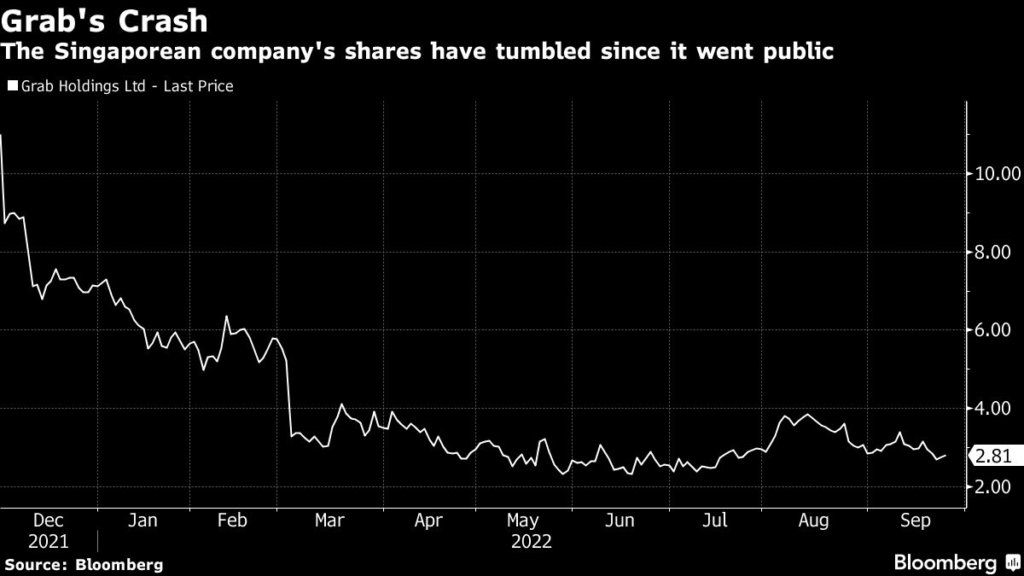Grab Holdings Ltd. expects slower revenue growth of 45% to 55% in 2023 as the Southeast Asian internet giant adjusts to a market downturn and speeds up efforts to reverse years of losses.
(Bloomberg) — Grab Holdings Ltd. expects slower revenue growth of 45% to 55% in 2023 as the Southeast Asian internet giant adjusts to a market downturn and speeds up efforts to reverse years of losses.
Chief Executive Officer Anthony Tan kicked off the company’s first investor day by trying to reassure shareholders Grab was on the rebound. The company backed by SoftBank Group Corp. anticipates breaking even in the second half of 2024 on a conditional basis, and excluding one-time items.
Grab, long considered one of the rising stars of Southeast Asia, has struggled since it went public through a merger with a special purpose acquisition company in December. Shares have tumbled more than 70% as the company wracked up losses in the post-Covid era and the stock market soured on unprofitable tech ventures. Grab, which went public by merging with Altimeter Capital Management’s SPAC in what was originally a $40 billion deal, is now worth about $10.8 billion.
“Looking ahead, we’re firing on all cylinders to improve our profitability trajectory,” Tan said at the company’s event in Singapore on Tuesday. “Grab is trying to achieve this by growing our top line in a sustainable manner.”
Grab, which counts Japan’s SoftBank and Uber Technologies Inc. as two biggest shareholders, expects losses to narrow to $380 million on an adjusted basis in 2022’s second half.
Executives said it now aims to break even by the latter half of 2024 on an adjusted earnings basis before interest, taxes, depreciation and amortization. That excludes as many as a dozen exceptional items, from fair value losses in investments to “restructuring costs.”
In the meantime, the company said it has about $6 billion of cash and liquid items on hand, giving it time to turn its on-demand and fintech services around.
Tan’s vision of creating a so-called superapp for Southeast Asia was aggressive, but led to extensive losses. Grab lost $3.4 billion in 2021 and has piled up almost $1 billion of losses in the first two quarters of this year. Revenue this year is set to roughly double to as much as $1.3 billion, Grab said last month.
The company started out focused on the ride-hailing business and competed effectively against Uber. The US company ended up selling Grab its business in Southeast Asia in return for a stake in its Singaporean rival. Grab then launched an ambitious — and expensive — campaign to expand into adjacent businesses, including food delivery and finance. It also added everything from hotel bookings and health services to gifts and entertainment experiences to its app.
Chief Operating Officer Alex Hungate said Grab will now have a more defined strategy, outlining an effort to make the company “Southeast Asia’s largest and most efficient on-demand platform that enables local commerce and mobility.”
“This is not just a bunch of words on a page,” Hungate said. “This defines our strategy in a more focused way than we’ve ever defined before.”
More stories like this are available on bloomberg.com
©2022 Bloomberg L.P.











